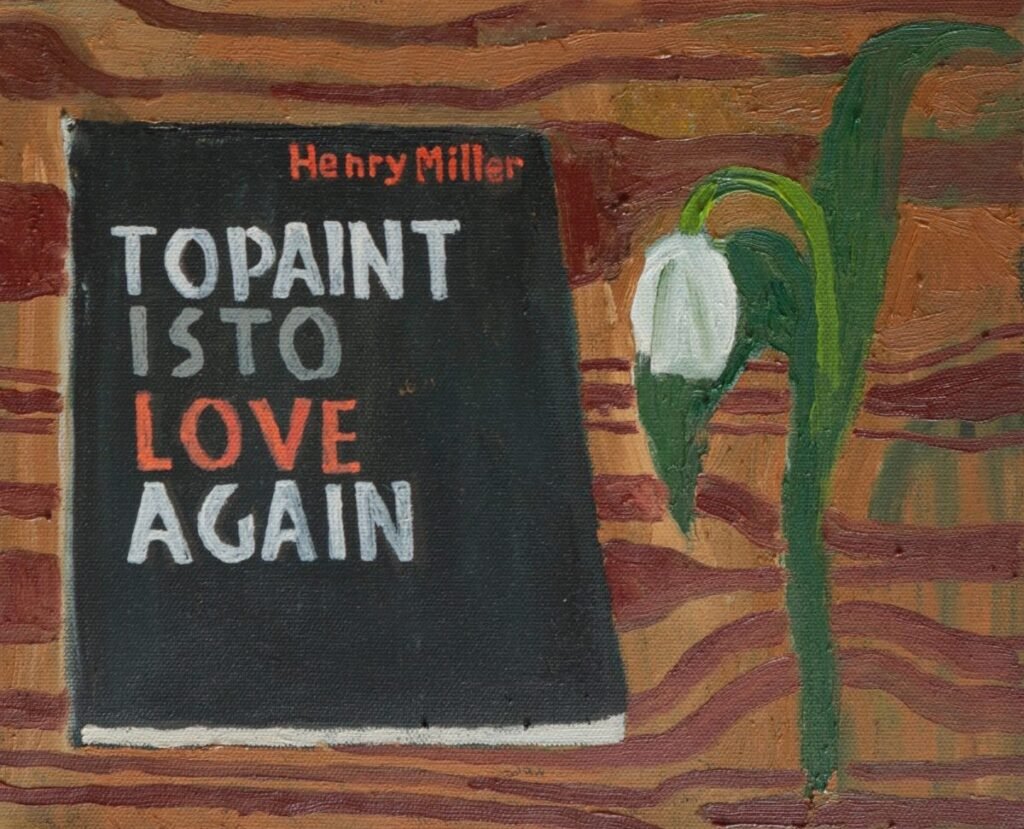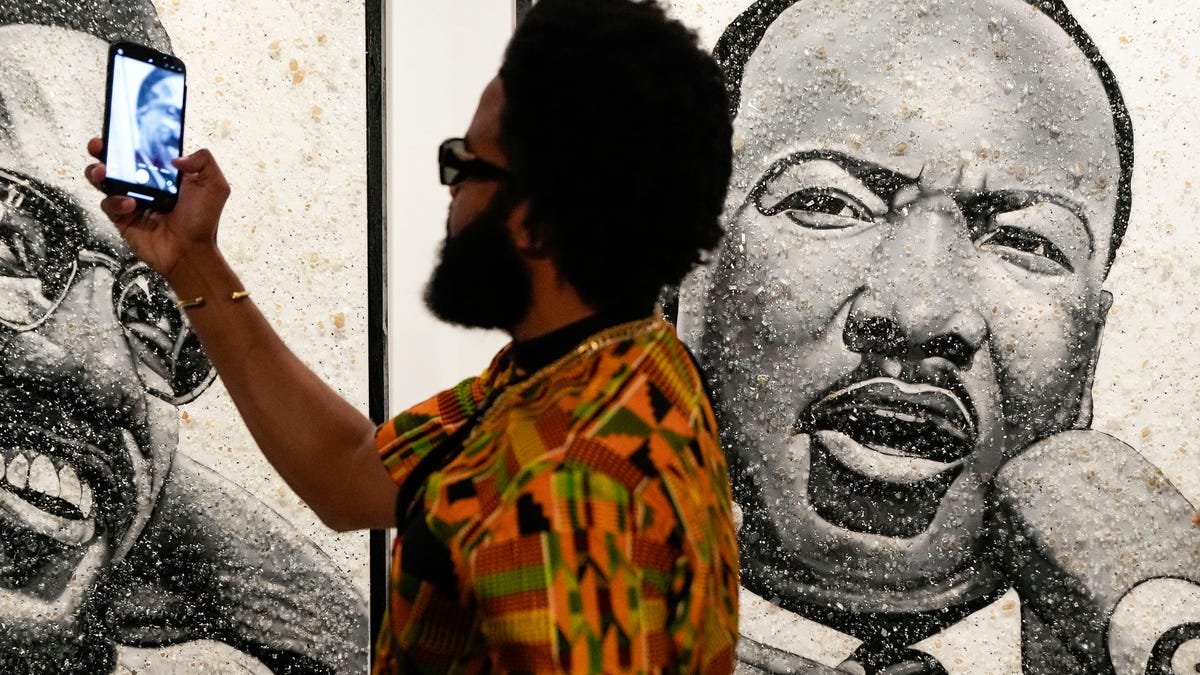
HUDSON, New York — I first heard about Mark Milroy from the poet Douglas Crase in 2015, when he sent me his essay about sitting for a portrait by the artist in 2013. In the essay, published in Tether magazine, Crase wrote: “Milroy […] can be said to outflank expressionism by containing its intense choreography in the diagnostic grace of the neglected English painter Cedric Morris.” The image piqued my interest, and Crase’s reference to Morris deepened it. Morris was Lucien Freud’s teacher, and his influence can be seen in the latter’s early paintings (which I prefer to the later, more celebrated ones). Morris’s work projects an oddness that manifests as a deeply felt sense of reticence. I suspected that Milroy shared some of this spirit, but all I had seen so far was one reproduced painting and could find little else on him.
In early 2022, Nancy Margolis Gallery hosted Milroy’s first solo exhibition that I know of, the online show Mark Milroy: Story Painting. The show was accompanied by an online publication, and a year later, the gallery held his second online exhibition, Mark Milroy: Between Metaphor & Meaning, this one accompanied by a catalogue with an essay by Aimée Brown Price. Each time I saw images of Milroy’s work I wanted to see it in person. I was finally able to with Mark Milroy: Just the Thing, his debut show at Pamela Salisbury Gallery, and I was not disappointed.
Milroy is an observational painter who depicts things and people in a non-perspectival space. With his use of flat forms and sharply tilted planes, he seems to be making a space that pushes back from the painting’s surface. His handling of space caught my attention in “Portrait of Douglas Crase.” The piece depicts the subject seated in an unseen chair against a backdrop of two hills dipping into a valley behind him. The painting feels both carefully observed and made up. I was reminded of late 15th-century Florentine portrait painting, and works such as Pietro Perugino’s “Portrait of Lorenzo di Credi” (1488), in which the subject’s face and upper torso are set against a background of distant hills, mountains, and trees.

In creating space without relying on perspective, Milroy hints at the influence of 15th-century Florentine portraits and Morris, as well as Philip Guston after his move away from abstraction, and Marsden Hartley, especially his still lifes. While I see these connections, I feel that Milroy has established his own territory.
“Erased Drawing” (2022) depicts a potted cactus in front of a drawing taped to a mottled khaki gray wall. The drawing portrays what looks like a young woman facing forward and a young man in profile, his face obscured by the plant. The juxtaposition of the drawing and cactus is disarming. The pairing of these two items might have been influenced by Surrealist art, but at the same time it has a discovered quality, as if he saw it in his own house. The yellow marks on the paper could feel arbitrary, but they don’t come across that way. Yet, importantly, they remain inexplicable.
“Just the Thing” (2024) is divided horizontally. The bottom is a table whose surface is flat against the picture plane; on it is a copy of Just the Thing: The Selected Letters of James Schuyler 1951–1991, edited by William Corbett, beside white flowers. The top is the wall, on which we see two heads facing each other, surrounded by black. Is this a photograph or a painting? No answer is forthcoming.

Schuyler loved flowers and was familiar with different species. He wrote about what he saw while sitting in a garden, living with Fairfield Porter and Porter’s family in Maine, or looking out the window of his New York apartment. He was a keen observer of everyday life. Milroy seems to feel an affinity with him. “Marvelous Universe” (2023) follows the same compositional format, but the book pictured is Henry Miller’s To Paint Is to Love Again. I love that a book by a reclusive, queer poet is in one painting and a little-known book by a highly social, heterosexual man, who was accused of writing pornography, is in the other. That breadth suggests that he has a genuinely capacious appetite for culture.
The compressed space and combination of downward and forward angles are reminders that seeing what is in the world requires actively engaging with it at all times. In “Alien Abduction” (2024), one of three large paintings in the exhibition, a barefoot adolescent boy lies on the grass, beneath a black cone shape filled with tiny dots of white light, some of which fall on him. Milroy again makes the painting self-contained, with no trace of irony. Is this a memory?
As direct and open as the painting is, there is something mysterious about it. That conundrum animates Milroy’s strongest works. He begins with direct observation but ends up someplace that I cannot name. For this viewer, that is more than enough. I want to see where he takes me next.

Mark Milroy: Just the Thing continues at Pamela Salisbury Gallery (362 1/2 Warren Street, Hudson, New York) through July 21. The exhibition was organized by the gallery.






